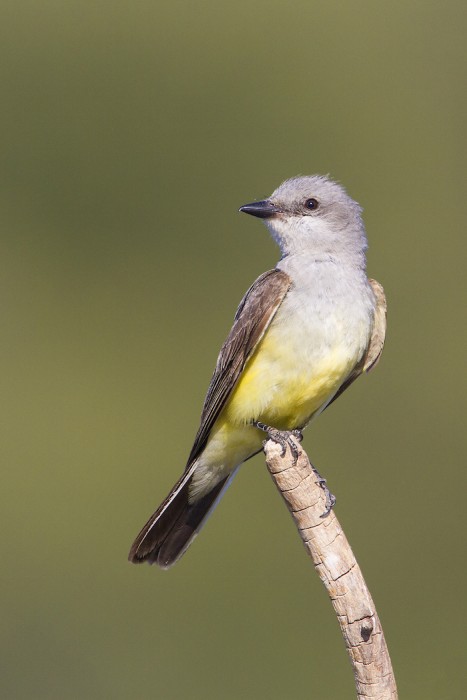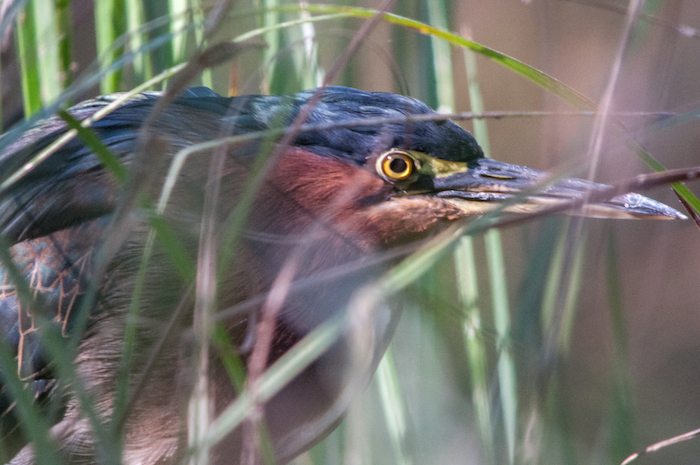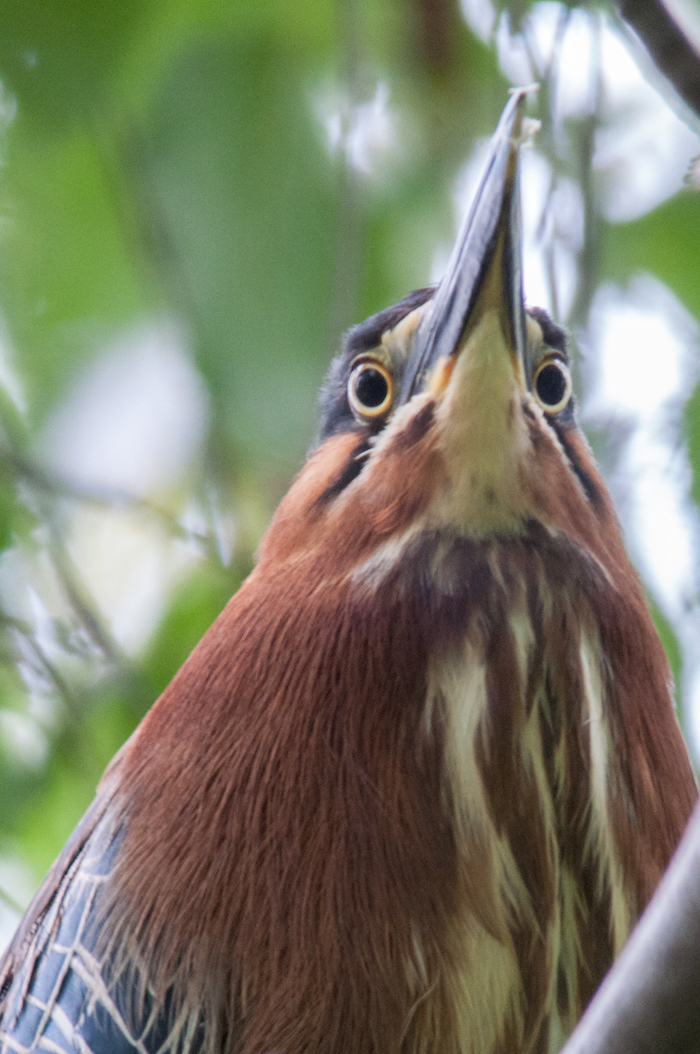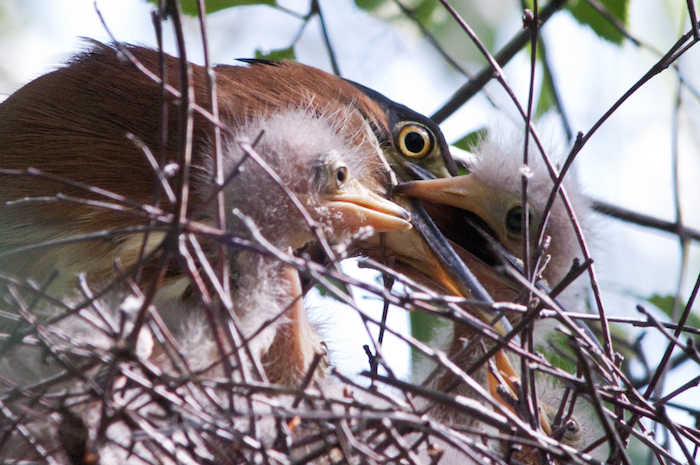Lema Ranch, an oasis of open space in Redding, is excellent year-around birding. The ponds, orchards, and fields of the McConnell Foundation Headquarters provide an abundance of bird species. We will look for Common Gallinules, Marsh Wrens, Great-tailed Grackles, Lark Sparrows and other Lema Ranch specialties. This will be a 2-3 hour walk on paved trails with fine public restrooms. Meet our leader, Linda Aldrich, at the north parking lot off Hemingway Street. Hemingway Street is across from Mountain View school on Shasta View Drive.
Tag Archives | Wintu Audubon
Second Saturday Bird Walk at Clear Creek Waste Water Treatment Plant
We visit along this stretch of the Sacramento River and its riparian forest, as well as several ponds holding tertiary-treated water. Winter resident passerines and water foul should be abundant. Assemble at the Treatment Plant’s Administration Building at the end of Metz Road at 8:00 am to meet your leader, Matt Gould. This is a ½-day trip that may end in the early afternoon if the birding is good.
Take Hwy. 273 and look for River Ranch Road after crossing Clear Creek. Cross over the Railroad tracks and turn left on Eastside Road. The entrance on Metz Road is on the right.
Second Saturday Bird Walk at Shasta College
With early fall migrants returning and before late summer residents leave, the oak woodlands, wastewater treatment pond, Stillwater Ck. riparian, and open fields should support a wide variety of species. Meet in Shasta College’s north parking lot for this 1⁄2 day trip that is open to the public. Bill Oliver and Connie Word will co-leaders.
Western Kingbirds on Field Patrol

Most birds are more sensible. They gather their food from the ground, or leaves, or something solid, or at least liquid! But flycatchers make a living on the wing, plucking insects—not necessarily flies—right out of the air.
The flycatchers are a large group of birds that thrive in many habitats. Some are small, greenish, and tucked in close to riparian brush. Some hunt in woodlands or forest canopies. Some flash brightly along open fields.
But all of them share their hunting behavior. They scan from a perch, fly out in pursuit of an aerial insect, and, with any luck, snatch the bug with their beak and return to a perch to dine. If you see a bird fly out, squiggle in the air, and return to a post or prominent branch, you are almost certainly watching flycatching.
Our largest flycatcher, the western kingbird, is frequently seen on roadside fence-wires. The fences make perfect perches from which to hunt over the fields they prefer. A nearby oak or telephone pole will provide a nesting site, and the kingbirds are good to go!
Not shy at all, western kingbirds decorate their neighborhoods with bright flashes of color from their lemon-yellow bellies, and loud, rubber-ducky chattering. They will tolerate nearby nests of what they judge as gentler birds, such as robins and doves, but aggressively harass hawks, owls, and nest predators such as ravens, crows, and magpies. While defending their nesting territories, kingbirds may become aroused, causing their head feathers to stand erect and revealing the crimson crown that is normally completely hidden but earns the kingbird its name.
Like other flycatchers, kingbirds must be strong flyers. To support their aerobatics, they have a keeled breastbone—picture a fin of bone extending out from your breastbone. This structure allows the strong muscles that move the wings to anchor farther forward, giving them better leverage for power and agility. A less pronounced version of the keeled breastbone may be seen in your chicken dinner.
Unlike chickens, kingbirds migrate a long way. Most western kingbirds winter in Central America. In March and April they flap a couple thousand miles into the western US or Canada. There they build a nest of soft plant material, usually high in a tree or human construction, and incubate a handful of camo-blotched eggs. The number of eggs per clutch and the number of clutches attempted vary with the abundance of food.
The hatchlings emerge naked in about eighteen days, and set about gaping for food and growing their muscle, bone, and feathers—gray head and back, yellow belly, and black tail with fine white edgings. If all goes well and the nest predators are kept at bay, in just three more weeks a new generation of western kingbirds is ready to try its skill at hunting the bugs that buzz our fields.
Green Herons: Flying Footballs

Green Heron (Butorides virescens) Hunting
Herons and egrets are some of our most elegant birds, standing regally or stepping slowly, with ballet precision and pointed intent. Indeed, it was the egrets’ showy white plumes that, hunted for use on fashionable ladies’ hats, helped spark the formation of the Audubon Society in 1905.
But the Green Heron is a scrappier member of the tribe. Low to the ground, darker, smaller, the bird is less striking than its cousins. But this time of year you may spot what looks like a football with wings flapping overhead as a green heron moves between riverbank and lakeside.
The birds are not so colorless as they likely appear to the unaided eye. A view with binoculars will reveal this little heron’s green umber back and crown, its rusty breast and cheeks, and frog-yellow legs and lores—the area between the eye and bill.
When looking for food, green herons typically huddle motionless at water’s edge, scanning for a minnow, snail, or other small animal that might make a meal. Their skulls hold their eyes with a downward slant, providing the binocular vision of hunters and directing their gaze where they want it, on the surface below.

Sometimes these little herons fish more actively: they use bait! Like just a few of their relatives, green herons have been observed repeatedly dropping insects, worms, or bread crumbs into the water and then snatching the small fish that are drawn in. Sometimes they even fish with their version of artificial lures—feathers or plant material. It is unknown whether this particular skill is genetically inherited, culturally learned, or individually discovered.
Each spring, following their optional migration, green herons court with wing-flapping and bill-clacking. The male chooses a nest site, either in a green heron neighborhood or in a more isolated spot, and either in a tree or on the ground. He coaxes his mate with various heron dance moves, including swaying back and forth with his bill pointed skyward. Then he typically frames their nest with a collection of thin sticks. He continues to bring sticks, but the female takes over their placement to meet her standards—which vary from flimsy to substantial.

Green Heron Nestlings Feeding
She lays about four pale green-bluish eggs, which both parents incubate for about three weeks. The helpless hatchlings rely completely on their parents, who feed them by regurgitation. After several weeks of such fare, the young begin to catch their own food.
Green herons live near quiet waters from the northern arc of South America up through Mexico and, in the summer, up into Vancouver. East of the Mississippi they nest throughout the States, but are declining there, probably due to loss of wetlands. The California population is thriving, and in the Redding area green herons are common during the breeding season and can be spotted occasionally even in the winter.
